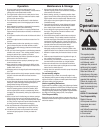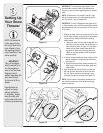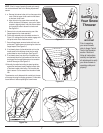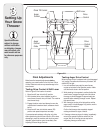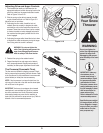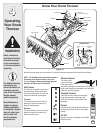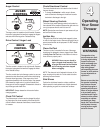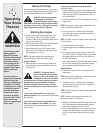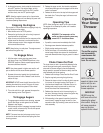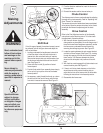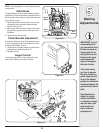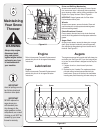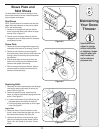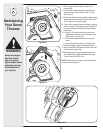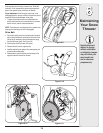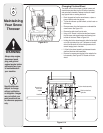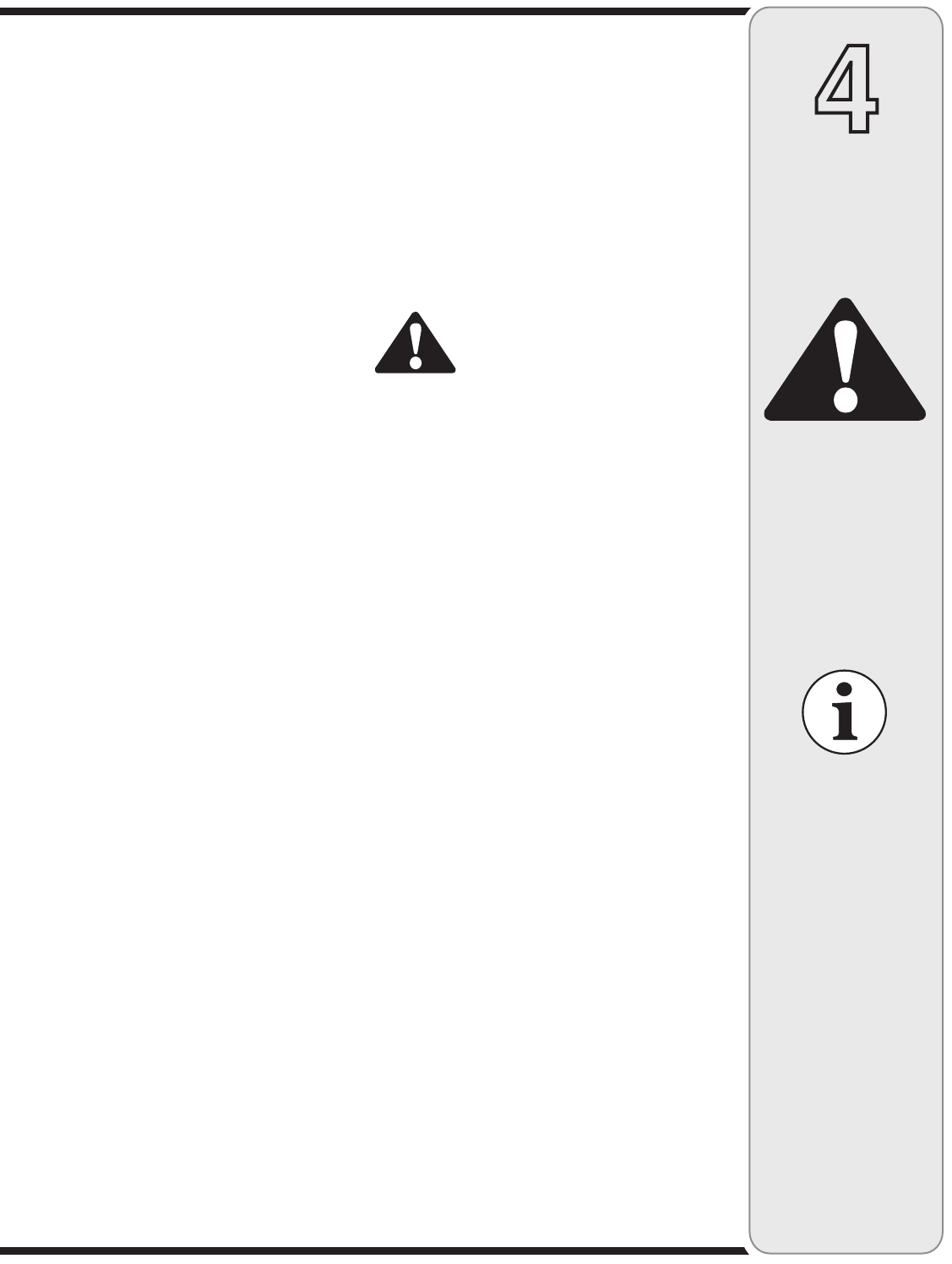
13
WARNING
The muffler, engine,
and surrounding
areas become hot
and can cause a
burn. Do not touch.
4
Operating
Your Snow
Thrower
NOTE: Use slower
speeds in higher snow
and/or until you are
familiar with the snow
thrower operation.
IMPORTANT
NEVER move the
shift lever without first
releasing the wheel
drive control. Doing so
will cause premature
wear on the drive
system’s friction wheel.
5. As the engine warms, slowly rotate the choke control
to the OFF position. If the engine falters, quickly
rotate the choke control back to the FULL position
and then slowly into the OFF position again.
NOTE: Allow the engine to warm up for a few minutes
after starting. The engine will not develop full power until
it reaches operating temperatures.
Stopping the Engine
Run engine for a few minutes before stopping to help dry
off any moisture on the engine.
1. Move throttle control to STOP position.
2. Remove the ignition key (do not turn key) to prevent
unauthorized use of equipment.
3. Wipe all snow and moisture from the area around the
engine as well as the area in and around the drive
control and auger control. Also, engage and release
both controls several times.
NOTE: Keep the key in a safe place. The engine cannot
start without the ignition key.
To Engage Drive
1. With the engine running near top speed, move
shift lever to one of six FORWARD positions or two
REVERSE positions. Select a speed appropriate for
the snow conditions that exist.
NOTE: Use slower speeds in higher snow and/or until
you are familiar with the snow thrower operation.
2. Squeeze drive control against the right handle and
the snow thrower will move. Release it and the drive
motion will stop.
IMPORTANT: NEVER move the shift lever without first
releasing the wheel drive control. Doing so will cause
premature wear on the drive system’s friction wheel.
3. To turn the unit left or right, squeeze the respective
wheel steering control. See Figure 4-1.
To Engage Augers
1. To engage augers and start snow throwing, squeeze
the left hand auger control against the left handle.
Release to stop augers.
2. While the auger control is engaged, squeeze the drive
control to move, release to stop. Do not shift speeds
while the drive is engaged.
NOTE: This same lever also locks auger control so you
can turn the chute control without interrupting the snow
throwing process.
3. Release the auger control; the interlock mechanism
should keep the auger control engaged until the drive
control is released.
4. Release the drive control to stop both the augers and
the wheel drive. To stop the auger, both levers must
be released.
Operating Tips
NOTE: Allow the engine to warm up for a few minutes.
The engine will not develop full power until it reaches
operating temperature.
WARNING: The temperature of the
muffler and the surrounding areas may
exceed 150° F. Avoid these areas.
• If possible, remove snow immediately after it falls.
• Discharge snow downwind whenever possible.
• Slightly overlap each previous path.
• Set the skid shoes 1/4-inch below the shave plate for
normal usage. Adjust them upward for hard-packed
snow and downward when using on gravel or crushed
rock.
Chute Clean-Out Tool
The chute clean-out tool is conveniently fastened to the
rear of the auger housing with a mounting clip. Should
snow and ice become lodged in the chute assembly
during operation, proceed as follows to safely clean the
chute assembly and chute opening:
1. Release both the Auger Control and the Drive Control.
2. Stop the engine by removing the ignition key.
3. Remove the clean-out tool from the clip which secures
it to the rear of the auger housing. See Figure 4-1.
4. Use the shovel-shaped end of the clean-out tool to
dislodge and scoop any snow and ice which has
formed in and near the chute assembly.
5. Refasten the clean-out tool to the mounting clip on
the rear of the auger housing, reinsert the ignition key,
and start the snow thrower’s engine.
6. While standing in the operator’s position (behind the
snow thrower), engage the auger control for a few
seconds to clear any remaining snow and ice from the
chute assembly.



